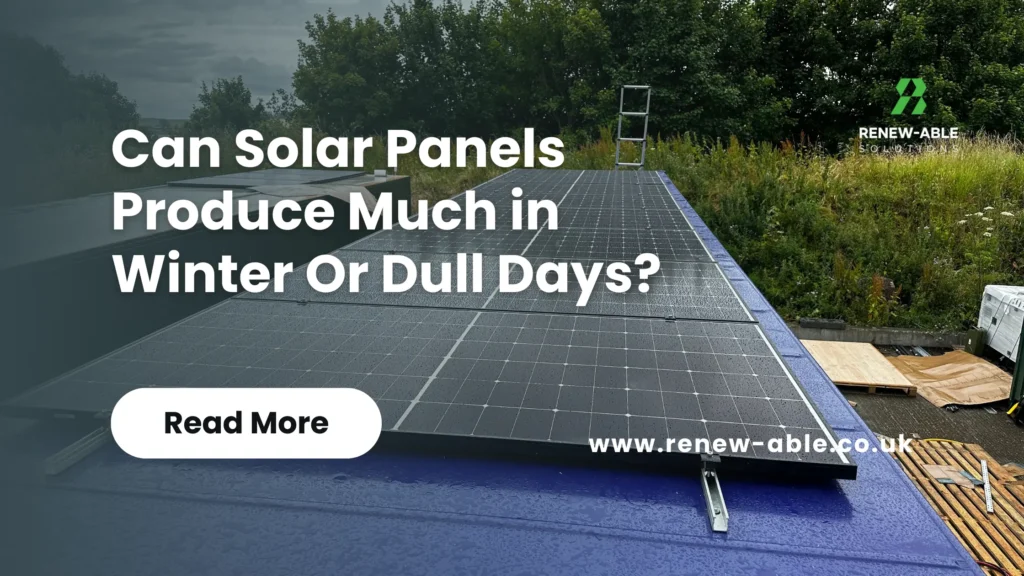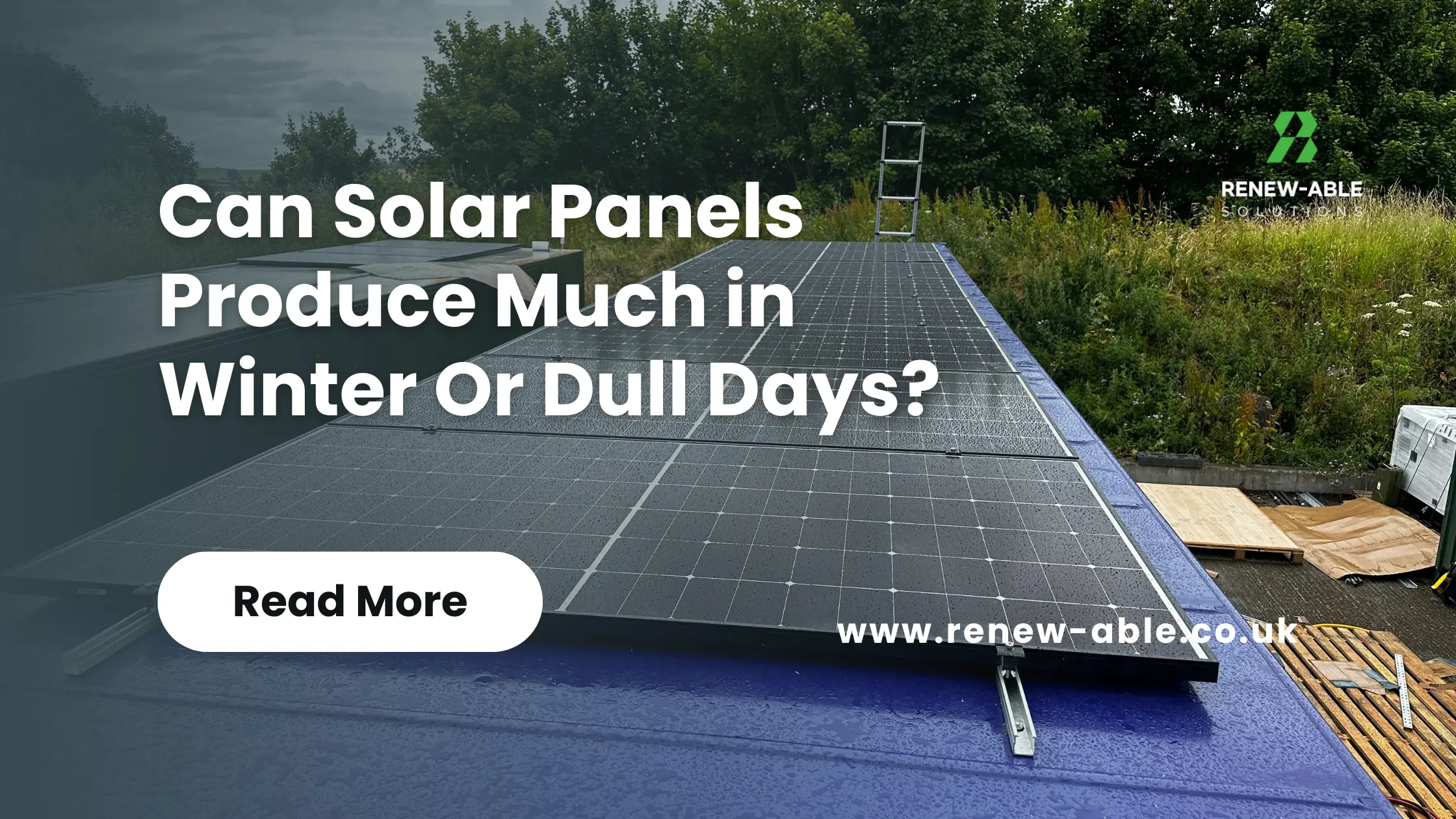This query: Can solar panels produce electricity in winter or dull days often causes hesitation for solar panel buyers. The simple answer is, yes, solar panels do produce electricity in winter and on dull days. But how much they produce depends on many factors. What this really means is: output goes down, but not to zero. Let’s go into the details:
Solar Panels Performance on Cloudy Days
On overcast days, solar panels can still generate electricity, even at reduced efficiency. No doubt, direct sunlight is ideal, but the clouds do not block all sunlight; they scatter it and create a diffuse light effect. Modern solar panels capture this diffuse light and form this; they produce energy even when the sky is grey.
Solar panels can generate 10–25% of their maximum output on heavily cloudy days. In some cases, thin clouds or the edge-of-cloud effect, where light is intensified as it passes through cloud edges, can even temporarily boost production. Moreover, always hire experts for solar panel installation in Edinburgh or beyond.
What Reduces Solar Panel Output in Winter & Cloudy Conditions
Here are a few factors that impact the solar panels’ output:
Shorter Days & Low Sun Angle
If you are living in Scotland or nearby areas, in winter, the sun rises late and sets early. This gives solar panels far fewer hours to generate power. On top of that, the sun sits much lower in the sky than in summer, which means sunlight travels through more of the Earth’s atmosphere before reaching the panels. That longer path scatters and weakens the light, so the panels receive less energy overall.
Cloud Cover / Diffuse Light
Clouds don’t stop panels from working, but they change the kind of light that reaches them. Instead of direct sunshine, panels mostly capture diffuse light scattered by the cloud layer. Output drops, but it doesn’t stop altogether. The thicker and darker the clouds, the greater the reduction.
Weather Effects
If there are snowy conditions, then the snow that settles on the surface of panels can completely block sunlight until it slides off or melts. Even when clear of snow, everyday factors like shading from nearby trees or dirt build-up can slow down the efficiency. Rain does some natural cleaning, but panels still need occasional maintenance to stay at peak performance.
Temperature Effects
Solar panels don’t need heat to work; they need light. In fact, high temperatures can reduce their efficiency. This means a crisp, cold winter day with clear skies can sometimes deliver stronger performance than an extremely hot summer day with the same amount of sunlight.
What Helps Maximise Solar Panel Output in Winter Or On Cloudy Days?
To get more from solar in low-light weather:
Invest in High-Efficiency Technology
Choose panels that are designed for low-light conditions, such as those with high-efficiency monocrystalline cells. Technologies like optimisers and micro-inverters can minimise energy loss from shading or cloud cover .
Optimise Panel Orientation and Angle
Adjust the tilt of your panels seasonally to capture more winter sunlight. A steeper angle of 45° helps panels face the low-hanging sun directly.
Add Battery Storage
Battery Energy Storage Systems store excess energy generated during daylight hours for use at night or during periods of low production. This can increase self-consumption rates to 50–90% and reduce reliance on the grid.
Perform Regular Maintenance
Keep panels clean and free of snow, debris, and shading. Use a soft brush or hose to remove snow, and trim overhanging trees. This maintenance can enhance solar productivity.
Use Government Incentives
Take advantage of solar panels grants and schemes like the Smart Export Guarantee (SEG), which pays homeowners for excess energy exported to the grid, and 0% VAT on solar installations.
Common Misconceptions
Here are some things people often believe that aren’t quite true:
- The myth that solar panels need heat and very sunny weather is not true. They need light, and cold weather does not matter.
- Cloudy days = no output is a false myth! Even on heavily clouded days, there’s diffuse light. Output drops but rarely to zero.
- North-facing panels don’t work. It is not true because they work less well than south-facing, but still produce, especially via diffuse light or reflected light (albedo) from snow, etc.
Environmental and Financial Benefits Year-Round
Despite lower winter output, solar panels remain a valuable investment and you can save energy even in winter. Solar energy reduces grid reliance and electricity bills. For example, a 4kW system can save homeowners up to £660 annually. Most systems pay for themselves in 6–10 years through bill savings and SEG income. Moreover, solar panels reduce carbon emissions year-round, supporting the UK’s net-zero goals.
Final Words
Solar panels are worth it even in winter because they produce energy in winter and on dull days, though at reduced levels compared to summer.
By understanding the factors that affect efficiency and implementing strategies like battery storage and optimal installation, homeowners can maximise their solar investment year-round.
FAQs
Do solar panels work in snowfall?
Yes. Light snow often melts or slides off panels, but heavy snow may temporarily reduce output until cleared. Panels are designed to withstand snow loads.
How much electricity can solar panels generate on a cloudy day?
On a heavily overcast day, panels produce 10–25% of their maximum output. For a 4kW system, this could mean 0.4–1 kWh per hour.
Can frost damage solar panels?
Frost itself is not harmful. However, if panels are damaged, melting frost could seep into cracks. Most panels are waterproof and designed to resist freezing temperatures.








